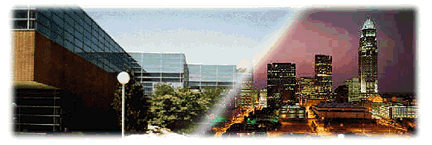

HowTo Design A City
Designing a city is a very complex problem area with many relationships, several of which can be described with a Semantic Network. The top level of the network would be a "City" like Charlotte or Greensboro. Several nodes that are contained within a city are : street, police dept., fire dept., and buildings. The city also collects taxes, provides utilities, and must enforce laws.
Many of these nodes tie back into each other through the network. For example, the police dept. has officers, who are humans, who regulate the laws. The semantic diagram can only show a small percentage of these connections before it begins to look extremely disorganized and confusing.
A city also has buildings, which contain offices, businesses, jails, apartments and garages. A building has rooms with walls, windows, doors; which all have hinges and/or knobs. Most of the nodes in the network will have characteristics such as size, shape and color.
We often take some of the nodes for granted. That is until Mother Nature comes along and takes them away. Consider your utilities : water, electricity, and sewage. Electricity allows many other nodes to exist. Some such systems are the HVAC system in the substructure of the buildings, the lighting systems and even the appliances that we use everyday. The water and sewage systems allow sinks, bathtubs and toilets, all of which provide comfort and/or convenience to the humans.
As you can see, designing a city is a very complex and intricate process that takes a lot of thought and planning. One must consider all the relationships involved to get so many nodes working together smoothly. To view a diagram of a partial semantic network, choose one of the following links: Network~ 23K or Network~123K.